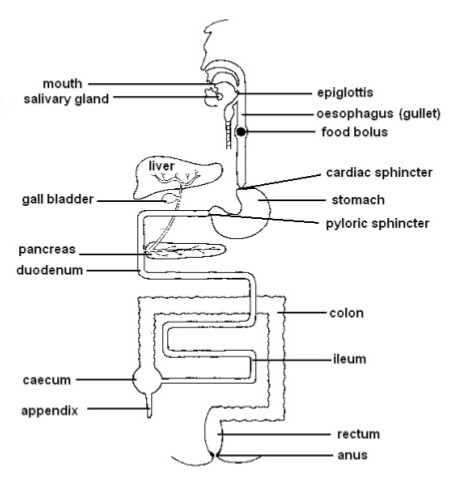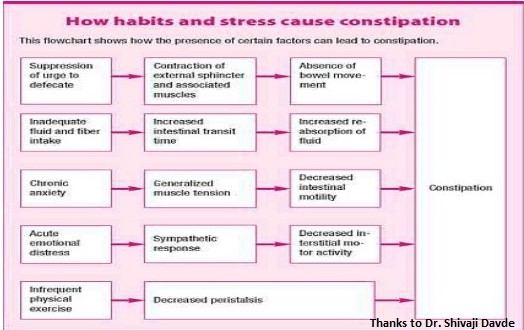Post By: Vishwanath Iyer Published on: December 19, 2016 Reading time: 6 minutes
Acknowledgement – School of Yoga is deeply grateful to late Dr. V. Sivaraman for his collaboration of Yoga Therapy for constipation.

Constipation – Physiology of digestion
To understand constipation, we need to understand the digestion process and how constipation fits in it.
Digestion is the process of converting food, which contains large and complex compounds into simple, soluble and usable compounds. For example, starch is broken down into glucose, protein into amino acids and fat into fatty acids and glycerol.

Causes of constipation
Constipation occurs because stools are not evacuating regularly from the system. This results in excessive water being removed. Consequently, the stools become hard and difficult to evacuate.
Solution to constipation depends a lot on lifestyle, and age;
Some examples of fibre content |
||
| Food group | Serving mean | Fiber g/serving |
| Cooked dry beans (legumes) | 0.5 cup | 8 |
| Dark-green vegetables | 0.5 cup | 6.4 |
| Whole grains | 28 g (1 oz) | 2.4 |
| Orange vegetables | 0.5 cup | 2.1 |
| Starchy vegetables | 0.5 cup | 1.7 |
| Other vegetables | 0.5 cup | 1.1 |
| Fruit | 0.5 cup | 1.1 |
| Meat | 28 g (1 oz) | 0.1 |
|
Āsana (click on the āsana to get a detailed process) |
Beginner | Intermediate | Final | |
| No | Time frame | 3 months | 3 months | thereafter |
| 1 | Padmāsana | 3 minutes | 3 minutes | 3 minutes |
| 2 | Trikonāsana | 2 | 3 | 3 |
| 3 | Pādahastāsana | – | 2 | 2 |
| 4 | Vīrabhadrāsana | 2 | 2 | 2 |
| 5 | Bhujaṃgāsana (very important) | 2 | 3 | 3 |
| 6 | Śalabhāsana | – | 2 | 3 |
| 7 | Dhanurāsana (very important) | 2 | 3 | 3 |
| 8 | Majriāsana | 1 | 2 | 2 |
| 9 | Pavanamuktāsana (very important) | 2 | 3 | 3 |
| 10 | Arda-halāsana | 2 | 2 | 2 |
| 11 | Sundara-viparītakaraṇi | 5 minutes | 5 minutes | 10 minutes |
| 12 | Sarvāngāsana (very important) | – | – | 5 minutes |
| 13 | Matsyāsana | – | – | 1 x 10 counts |
| 14 | Arda-matsyendrāsana (important) | 1 x 10 counts | 2 x 10 counts | 2 x 10 counts |
| 15 | Uḍḍīyana (very important) | 1 x 5 counts | 1 x 5 counts | 2 x 10 counts |
| 16 | Nāḍī-śuddhi prāṇāyāma | 5 x 2 cycles | 5 x 2 cycles | 5 x 2 cycles |
| 17 | Kapālabhātī (very important) | 20 x 2 cycles | 40 x 2 cycles | 50 x 2 cycles |
| 18 | Śavāsana | 5 minutes | 5 minutes | 5 minutes |
| 19 | Meditation – dhyāna (sit in silence and focus on the breath) | 10 minutes | 10 minutes | 10 minutes |